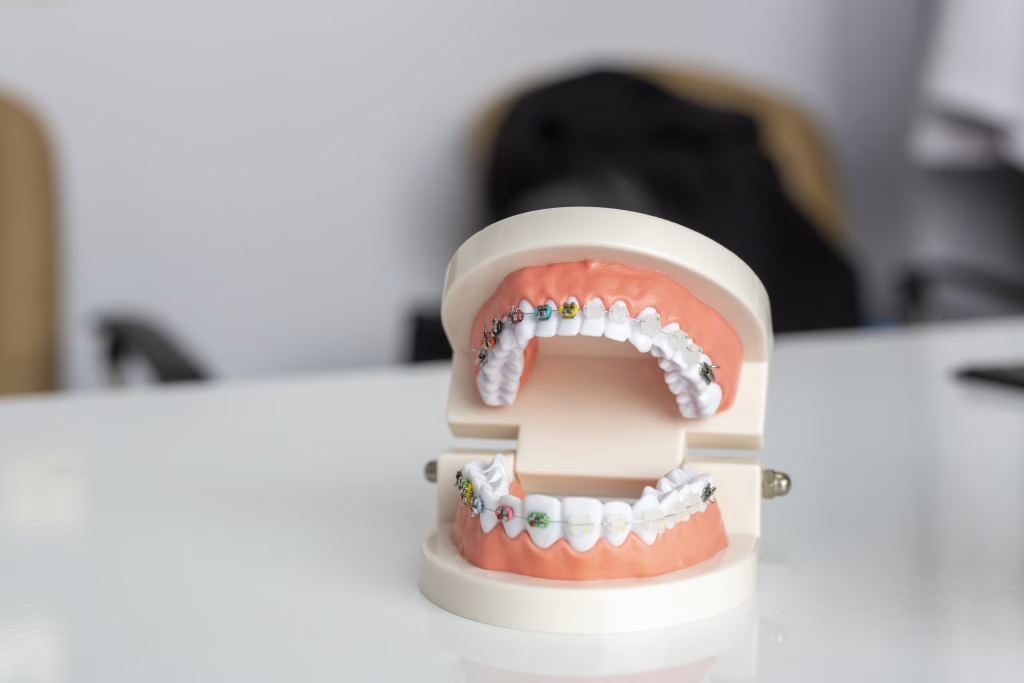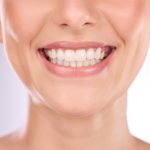- When it comes to achieving a straight, beautiful smile, patients today have more options than ever. Two of the most popular methods for teeth straightening are traditional braces and clear aligners. Each option comes with its own set of benefits and drawbacks, and the best choice depends on your unique dental needs, lifestyle, and preferences. In this blog post, we’ll explore the pros and cons of both braces and aligners to help you make an informed decision.
Traditional Braces
Traditional metal braces have been the go-to orthodontic treatment for decades, and they remain a highly effective way to correct a wide range of dental issues.
Pros of Braces:
- Effective for Complex Cases
Braces are highly effective at treating severe misalignments, including issues like overcrowding, overbites, underbites, and crossbites. They apply continuous pressure to gradually shift teeth into the correct position. - No Compliance Needed
Since braces are fixed to the teeth, they work continuously without the need for patient involvement. You don’t have to worry about remembering to wear them—unlike aligners that need to be taken in and out. - Versatility
Braces can be customized for individual needs, including metal, ceramic, and lingual (behind-the-teeth) braces, offering a range of aesthetic options.
Cons of Braces:
- Aesthetic Concerns
The most obvious drawback of traditional braces is their appearance. Metal brackets and wires are visible, which may be a concern for teens and adults who prefer a more discreet option. - Discomfort
Braces can cause irritation to the gums and cheeks, especially after adjustments. It can take time to get used to the sensation of having metal brackets and wires in your mouth. - Dietary Restrictions
With braces, you need to avoid hard, sticky, or chewy foods that can damage the wires or brackets. This can make eating certain foods more challenging. - Oral Hygiene Challenges
Braces make it more difficult to clean your teeth properly. Food particles can easily get stuck in the brackets, leading to a higher risk of cavities and gum disease if oral hygiene is not maintained.
Clear AlignersClear aligners, such as Invisalign, have gained popularity in recent years due to their discreet appearance and convenience. They consist of a series of custom-made, clear plastic trays that gradually shift the teeth into place.Pros of Aligners:
- Discreet Appearance
One of the biggest advantages of aligners is that they are virtually invisible, making them a popular choice for adults and teens who want a more subtle way to straighten their teeth. - Comfort
Aligners are made of smooth plastic and don’t have the metal brackets or wires that can irritate the mouth. Many patients find them more comfortable than braces. - Removable
Aligners are removable, which means you can take them out to eat, brush, and floss. This allows for better oral hygiene and fewer dietary restrictions compared to braces. - Fewer Office Visits
With clear aligners, fewer orthodontic appointments are typically needed compared to braces, making them a convenient option for busy patients.
Cons of Aligners:
- Not Suitable for Severe Cases
Clear aligners are best suited for mild to moderate misalignment. They may not be as effective as braces for complex orthodontic cases, such as severe bite issues or significant overcrowding. - Requires Discipline
Aligners must be worn for 20–22 hours a day to be effective. If patients frequently forget to wear them or remove them too often, treatment can be delayed. - Cost
Aligners tend to be more expensive than traditional braces, which may make them less accessible for some patients. - Risk of Loss or Damage
Since aligners are removable, there’s a higher chance of them being lost or damaged. Replacing aligners can add to the cost and extend treatment time.
Which Option is Right for You?
Choosing between braces and aligners depends on several factors, including your orthodontic needs, personal preferences, and budget. Here are some key considerations to help guide your decision:
- Severity of Misalignment: If you have complex orthodontic issues, braces may be the better option. For milder cases, aligners may be just as effective.
- Aesthetic Preferences: If the appearance of braces is a concern, clear aligners offer a more discreet solution.
- Lifestyle and Discipline: Aligners require a high level of responsibility. If you don’t think you’ll wear them as prescribed, braces might be a better choice.
- Comfort and Convenience: Aligners offer more flexibility with eating and oral hygiene, but braces are a “set it and forget it” option.
Both braces and aligners are effective methods for straightening teeth, but the right option depends on your individual needs. Braces are ideal for those with more complex dental issues, while aligners provide a discreet and convenient alternative for those with milder cases. Ultimately, consulting with an orthodontist will help you determine the best treatment plan to achieve the smile you’ve always wanted.
- Discreet Appearance
- Effective for Complex Cases






